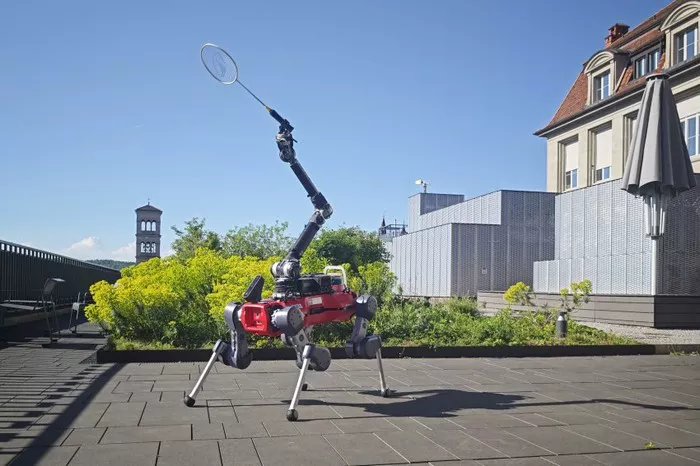A research team at ETH Zurich has unveiled a groundbreaking AI-driven legged robot capable of autonomously playing badminton against human opponents.
The robot, a four-legged machine named ANYmal-D, uses a reinforcement learning–based control system to track the shuttlecock’s flight, predict its trajectory, and move swiftly to intercept and return shots. Equipped with a stereo camera for visual input and a dynamic arm holding a badminton racket, ANYmal-D demonstrates impressive agility and coordination on the court.
“Beyond badminton, this method offers a blueprint for deploying legged robots in dynamic tasks that demand precise sensing and rapid whole-body responses,” the researchers said.
Unified Control for Complex Motion
Badminton requires athletes to coordinate fast footwork with accurate arm swings, challenging both perception and motor skills. Replicating this level of coordination in robots has been difficult due to hardware and control limitations. Unlike humans, commercial robot cameras struggle with stabilizing motion and tracking fast-moving objects like shuttlecocks.
Past advances in athletic robotics have focused on locomotion tasks such as running or flipping but often lacked integrated manipulation or relied on controlled environments.
This study developed a unified reinforcement learning controller for ANYmal-D, combining legged movement with racket swinging using onboard perception. The robot can track and predict shuttlecock trajectories in real time, aided by a perception-aware model trained in simulation to reduce visual errors from robot motion.
The controller uses an asymmetric actor-critic framework and learns continuous, responsive behavior by tracking multiple swing targets. This design balances agility and visual accuracy, ensuring reliable real-world gameplay.
“A major benefit is that the controller optimizes upper and lower limbs together from the start, allowing natural compensation between arms and legs for coordinated whole-body motion,” explained Yuntao Ma, a co-author from ETH Zurich.
Rallying with Humans
In tests against human players, ANYmal-D successfully returned shots of varying speeds and angles, achieving rallies up to 10 consecutive hits. The robot adjusts its gait dynamically based on timing and distance, handling shuttlecock speeds up to 12.06 meters per second.
Notably, ANYmal-D can rise onto its hind legs to maintain shuttlecock visibility before swinging, prioritizing balance and safety to avoid falls.
However, it struggles against very fast or aggressive shots like smashes, mainly due to hardware limitations in camera responsiveness and actuator speed rather than the control algorithm itself.
When asked about adapting this control system to other tasks, Ma said, “Yes, the framework is designed to generalize. We’ve already applied it to precise robotic throwing. The key contribution is integrating active perception into reinforcement learning, useful in any task requiring tight perception-control coordination.”
Future Improvements
The team plans to reduce the system’s current average 0.375-second delay between the opponent’s shot and the robot’s swing command. Faster cameras or additional sensors could improve responsiveness, enabling longer rallies and more competitive gameplay.
Related topics:

